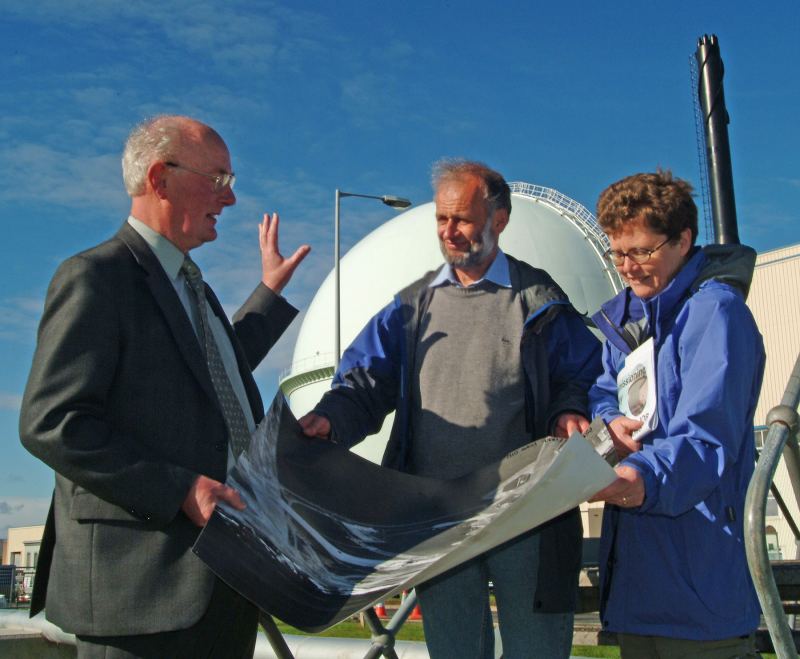
Electrical engineer Hugh Ross (left), who started work with UKAEA in 1956 and served under first site director Dr Robert Hurst,
explains how the Dome of Discovery was built and operated to Dr Hurst's nephew Tony and his wife Margaret.
| N E W S F E E D S >>> |
|
Caithness.org News Bulletins |
||
| Dounreay News Index | Caithness.org News Index | Front Page Archives |
|
New Zealander Tony Hurst today (14 September 2004) made a nostalgic visit to the former experimental reactor establishment where his uncle led the world in fast reactor technology. The late Dr Robert Hurst was the first director of Dounreay from 1958 until 1963 when the site’s landmark fast reactor became the first in the world to supply electricity to a national grid. His nephew, Dr Tony Hurst, is touring the UK with his wife Margaret and decided to seek out the site of his uncle’s pioneering work. The couple called in yesterday at the visitor centre at Dounreay that tells the story of the world-leading research carried out there from the 1950s, and how the project is now being dismantled. |

Electrical engineer Hugh Ross (left), who
started work with UKAEA in 1956 and served under first site director Dr Robert
Hurst,
explains how the Dome of Discovery was built and operated to Dr Hurst's nephew
Tony and his wife Margaret.
|
“Uncle Bob came back to New Zealand a few times and I remember seeing articles in our local paper at the time about how he was the director of Dounreay,” said Tony. “We’ve been to Britain before but hadn’t been north of Inverness so I wanted to make sure I saw Dounreay on this trip.” Tony, a geophysicist and volcanologist with the Institute of Geological and Nuclear Sciences at Lower Hutt, New Zealand, explained to staff at the visitor centre who is famous uncle was. They arranged for Tony and Margaret to be escorted around the site for a closer view of Dr Hurst’s work, particularly the spherical reactor that became an international symbol of Dounreay’s pioneering work. The couple met Hugh Ross from Reay, a senior electrical engineer at Dounreay, who started his career as a UKAEA apprentice in 1956 and worked under Dr Hurst. Dr Hurst, who came from Nelson in New Zealand, arrived in Britain during the war and received the George Medal for his work in defusing unexploded bombs. He obtained a PhD in Chemistry and joined Britain’s fledgling atomic research programme before becoming first director of Dounreay in 1958. He left in 1963 to become Director of Research with the British Ship Research Association. Dr Hurst, who died in 1996, retired to Poole in Dorset where his widow, Rae, continues to reside. |